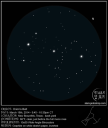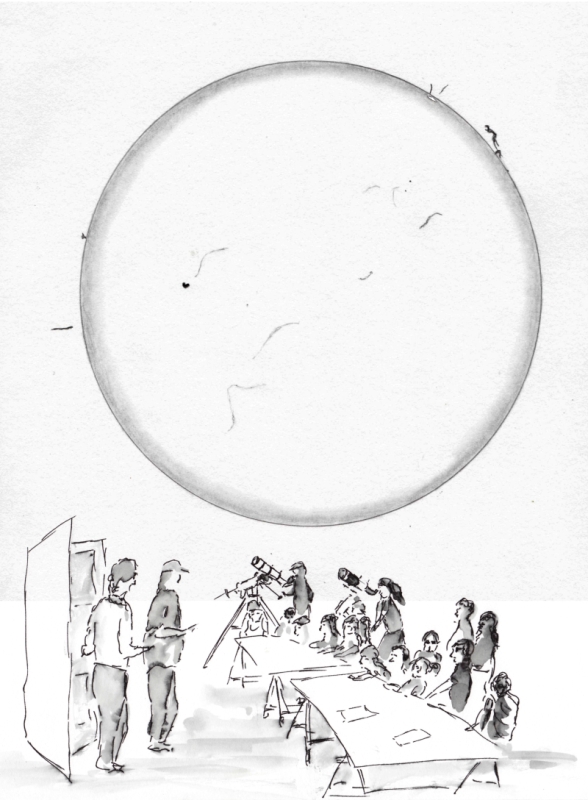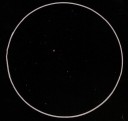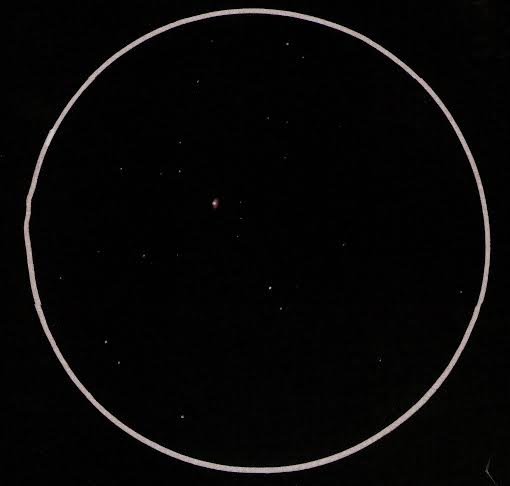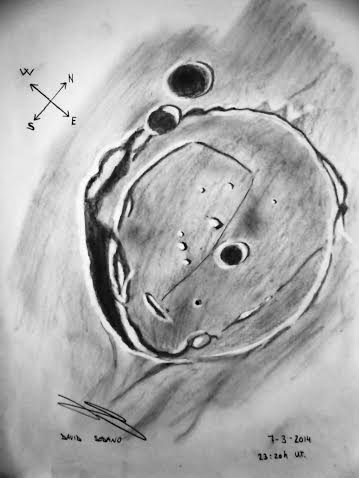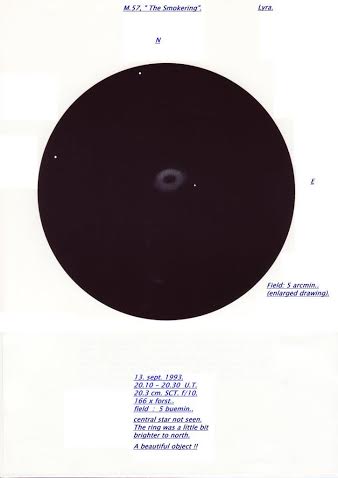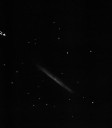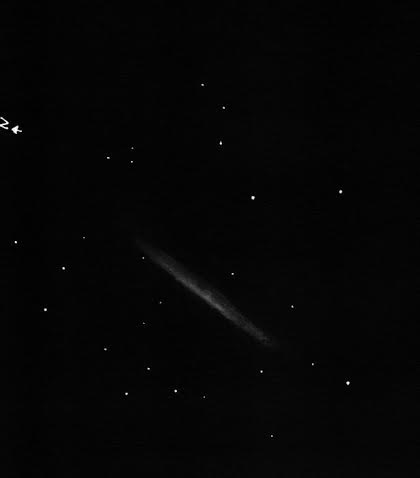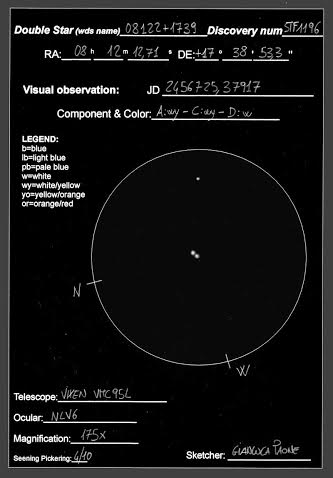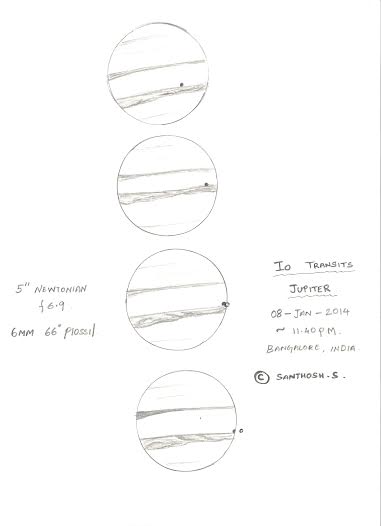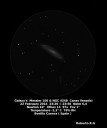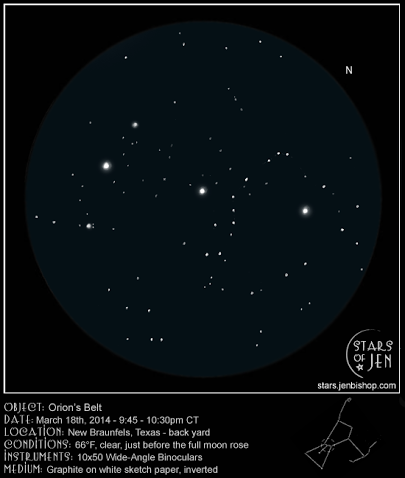
My last observation of the official winter season, I chose the infamous asterism of Orion’s Belt. Perhaps one of the most recognizable formations in the Northern Hemisphere night sky, it is often best studied and seen in the winter… thus, my farewell to Winter… and hello to Spring! My eyes were also drawn to a sort of secondary formation that seemed to snake through the “belt”. Orion was a hunter, so perhaps aside from his sword, he carried some rope with him as well!
Object: Orion’s Belt
Date: March 18th, 2014 – 9:45 – 10:30pm CT
Location: New Braunfels, Texas – back yard
Conditions: 66°F, clear, just before the full moon rose
Instruments: 10×50 Wide-Angle Binoculars
Medium: Graphite on white sketch paper, inverted
Stars of Jen
http://stars.jenbishop.com
